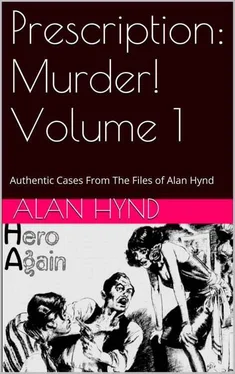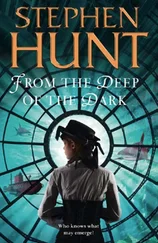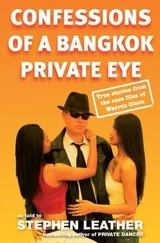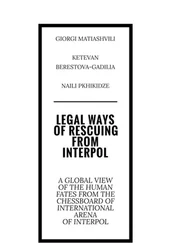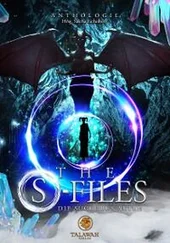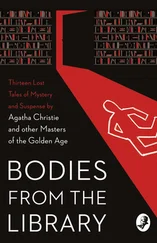Prescription: Murder!
Volume 1 of 3
By Alan Hynd with Noel Hynd
“Murder is like potato chips: you can’t stop with just one.”
— Stephen King, Under the Dome
My father, Alan Hynd (1903–1974) was one of the foremost true crime writers of his day. Over a career that spanned almost fifty years, he wrote close to two dozen published books, probably more than a thousand magazine articles, several radio and TV shows and a couple of films. It was not a bad life’s work — it was just mostly about bad people.
He had a style, which was more anecdotal than scholarly, more entertaining than academic. A keen sense of humor, sometimes very dark, was never lost on the events, and was almost always conveyed in his reporting. Prescription: Murder! is a small sampling of some of his more memorable articles, classics in the annals of true crime. This collection is about doctors who killed, for example. There are four episodes about doctors and then a bonus track about a nursing home. This is stuff that just couldn’t be invented. Where possible, I’ve included illustrations from the eras of the story. They are all in the public domain.
I have gone through all of these stories and re-edited them for modern audiences. In some cases, I made small additions, adding information that may have come to light on these cases in the forty years since my father died. I’ve retained his jaundiced outlook on the cases he wrote about, and kept his style. I like to think I have done it in a manner that would have pleased him. Hence I added my name as a writer here more than an editor. In the final years of his life, I ghosted several articles for him. So I can think of no one more qualified than myself to tinker.
A final note: The dialogue in several of these articles is closer to the truth than one might think. All of it was taken from court proceedings of the era, credible newspaper accounts and actual confessions, then “cleaned up” a bit.
Alan Hynd’s stories, which appeared in publications from, The Reader’s Digest and The Saturday Evening Post to True Detective, had thousands of fans in their day. Thanks to the accessibility of electronic publishing, it is never too late to become one.
If you like true crime, or just a crazy jaw-dropping story, this is probably for you. Enjoy.
Noel Hynd September 2014 Los Angeles, California
The Case of the South Philly Slaughterers
…in which a homicidal threesome made accidents pay.
The trouble with Doctor Morris Bolber, who functioned as a faith healer in the Italian section of South Philadelphia back in the Terrible Thirties, was that he could never quite bring himself to have much faith in the theory that murder will out. This attitude of the discerning doctor sprang in part from conditions right in his own neighborhood. Bolber, whose ear was never very far from the ground, was aware of three instances wherein ladies, for various reasons, had poisoned their spouses.
The Philadelphia Police Department, without realizing it, or in fact caring much, was lending an assist to this shocking state of affairs. The Department in the Thirties was honey-combed by grafters from City Hall down to the flatfeet on the beat with the result that many honest cops were usually so preoccupied by worry over getting the rug pulled from under them that they didn’t notice what was going on among the citizens. Thus a murderer who was sly enough not to throw his victim out with the garbage or appear in the New Year’s Day Mummers Parade with somebody’s head stuck to a broomstick, stood in a fair way to go unmolested indefinitely. And, for a man who was really clever, the field of pre-meditated homicide offered opportunity practically beyond limit.
All of that raises the curtain on one of the strangest episodes ever in the history of American homicide. Let’s consider the three main players, a pair of cousins named Herman and Paul Petrillo and their associate, one Dr. Morris Bolber.
Herman Petrillo was born in 1899 in the province of Campania, near Naples. He came to the United States in 1910 and first worked as a barber. Then he found more profitable ways to make money: his schemes first consisted of arson and insurance fraud. Eventually, however, he came across a small Philadelphia gang selling counterfeit five-dollar bills for half the face value. Petrillo bought in, learned the business, so to speak, and was printing his own.
Herman Petrillo’s cousin, Paul Petrillo, also landed in Philadelphia in 1910. He married shortly after his arrival in the States and opened a tailor shop, Paul Petrillo, Custom Tailor to the Classy Dressers, on East Passyunk Avenue. The business was successful for many years. Then along came the Depression and no one was buying new threads. So Paul the Tailor was on the rocks financially. Soon thereafter, he got into the life insurance racket. He sold cheap policies: weekly premiums were 50 cents or a dollar. The insurance company he worked with was a fly by night outfit that never had any intention of making a big payout. It also did not require a medical examination of the insured. So Paul Petrillo would sell policies mostly to sick and injured middle-aged men. A good deed, you think? Think again. Petrillo had his own game plan. He was working with immigrants, don’t forget, people who were often illiterate in English. So Petrillo would list himself on the policy without the policyholder’s knowledge, often making himself the sole beneficiary. At first, Petrillo was playing a numbers game and hoping for a hit in the form of a death of someone that he had insured. Later on, things would take a darker turn.
Paul Petrillo also had a side interest, stemming from legends he had heard as a boy in Italy: faith healers. A superstitious man, he was also fascinated by magic; particularly as it was practiced by men who claimed the power to take away a person’s pain. Through this interest, and prowling through the nether regions of South Philadelphia, Petrillo came across a middle-aged man known in the neighborhood as Louie the Rabbi.
Louis was actually a Russian Jewish immigrant named Morris Bolber. Bolber had been raised by his grandparents in a small village near Moscow. He was a child prodigy, entering Grodno State University at age nine and graduating at twelve. He then became interested in the Kabbalah as well as other ancient books of magic and mysticism. His fascination morphed into a fixation. In 1905 he traveled to China and sought out a legendary sorceress. Bolber lived with the old woman for five years, then immigrated to New York City in 1911, calling himself “Dr.” now, following his education in China. He married and settled on the lower East side. He worked as a teacher, saved his money earnestly, and ran a grocery store. For many years, he led a normal life.

Then came the Depression. His business failed. Bolber packed up his wife and family and moved to Philadelphia. But now he had an inspiration: He sent out handbills announcing his new practice as a faith healer.
So by the mid-1930’s, Paul Petrillo had met the man known as Dr. Morris Bolber. Through Paul, Bolber met Cousin Herman. And so there they were, the counterfeiter, the insurance guy and the fake doctor. Things were reader to roll.
By the year 1932, Doctor Bolber was in nasty financial straits once again. The pickings in the faith healing field had been slim since the Great Depression of 1929. The faith healer’s patients had either lost faith in him or couldn’t afford to be healed.
Читать дальше
